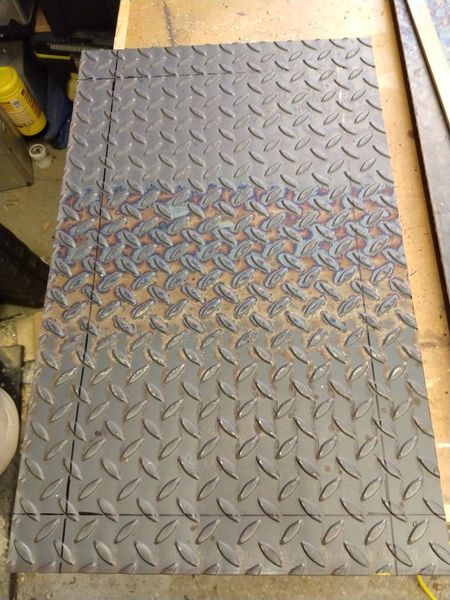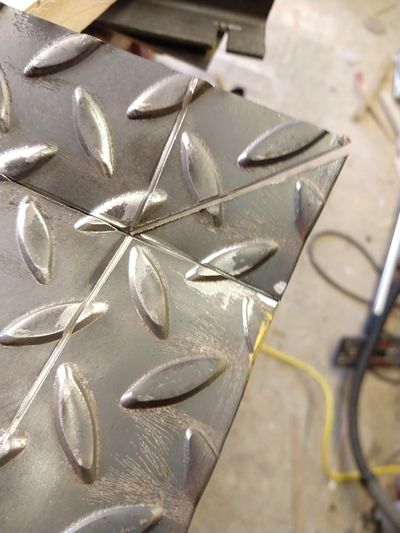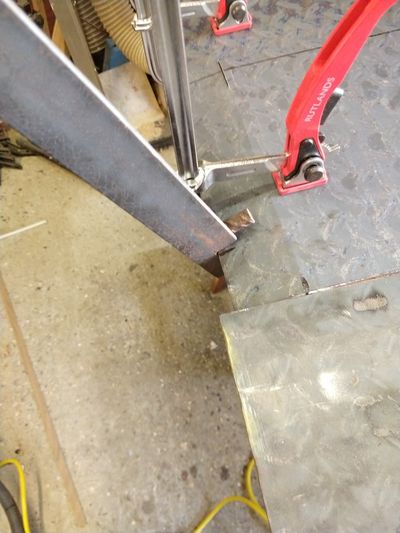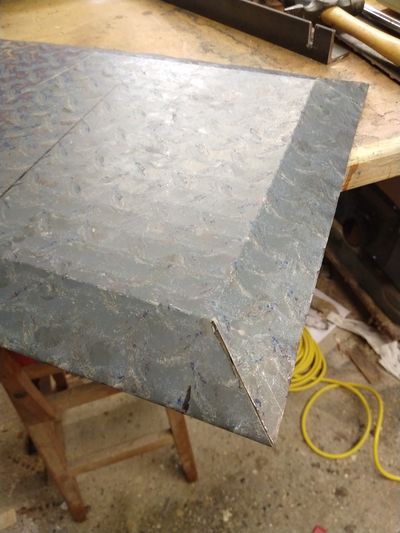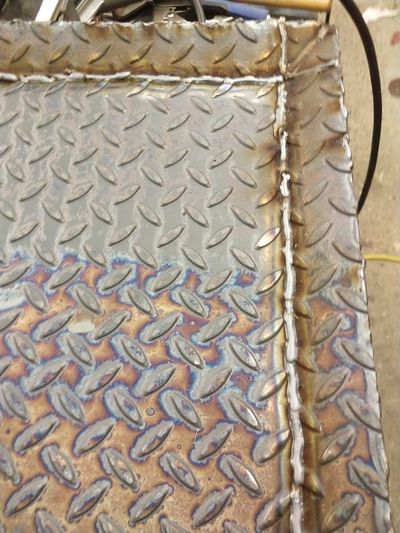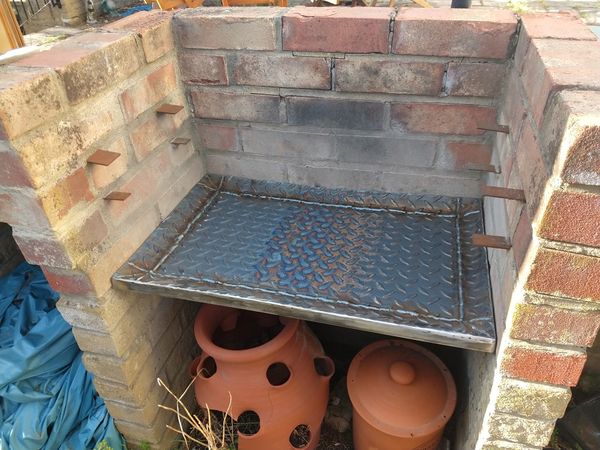BBQ fire tray upgrade
We have this brick built BBQ, a simple arrangement with brick side walls and a back, and a couple of side "lobes" that sport a paving slab work surfaces. The centre walls have some projecting metal tabs onto which you can place a standard BBQ kit, with a fire tray, and grill wires etc.
Having recently had the second (or possibly third) of these flimsy things fail due to the fire tray being made of what seems like folded tin foil - tin foil that rusts through after about the third use, I though it was time to overbuild a more industrial looking solution, just in time for Autumn.
I had some spare 3mm mild steel checker plate left over, so this what I did with it...
Design
I had some spare 3mm mild steel checker plate left over, so this what I went with...
The plan was "simple" - mostly a flat sheet with the edges turned up a bit to add some stiffness, and also to stop the coals falling off the edge or leaning on the brickwork. Then a lip fitted round the under side of the tray for extra stiffness and hopefully to stop it warping from the heat of the fire.
Fabrication
I measured the gap, and worked out the finished size. Then got all mathematical on it and worked out how much extra material I would need to a 50mm perimeter that bent up 25mm at the edges. (about 12mm extra apparently).
I chopped that out with the metal cutting blade in the circular saw. I then marked out where the folds needed to go.
Since I don't have a sheet metal brake (another project perhaps!) I needed to find a way to do a neat bend. So I scored the fold lines with a thin kerf slitting disk on the angle grinder, clamped it the the edge of the workbench, and worked my way along the edge with a bending bar (basically a length of angle iron with a notch cut in one end and a couple of stubs of rebar welded to it).
The bar can be hooked over the edge, and some bend applied - working along the edge, doing a little bit of bend at a time. .
Having bent a side, I then cut a mitre at the corner, so that I could then bend the adjacent edge.Once folded the corner will not be a true 45, so that needed a little tweaking. I found the easiest way to bring the edges nearly together (they overlap slightly) was to just run the angle grinder disk up the join.copping off the overlapping bits.
Next job was to weld up the surface cuts where the bend was made.
The final job was to set about it with a 40 grit flap disk in the grinder, round over the corners, and make it all look slightly more pretty.
The thing weighs significantly more than a couple of complete "off the shelf" BBQ kits, so time will tell how well it works.
Updates probably next summer!
